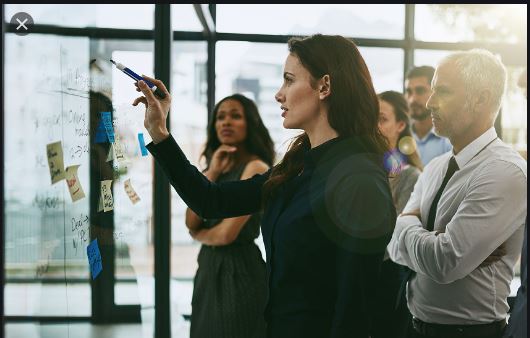Challenges in Financial Inclusion of Women

Increasing access to and use of quality financial products and services is important to an inclusive economic process and poverty reduction. Research shows that when people participate within the economic system, they’re better ready to manage risk, start or invest in a business, and fund large expenditures like education or a home improvement. Despite the overall progress made in terms of financial inclusion, the gender gap remains intact.
Women’s financial inclusion occurs when women have effective access to a range of financial products and services that cater to their multiple business and household needs and that are responsive to the socioeconomic and cultural factors that cause financial exclusion in women.
A well-developed body of literature shows that closing the gender gap in financial inclusion could have positive effects in smoothing consumption, lowering financial risks and costs, providing security, increasing saving and investment rates, and facilitating new business opportunities. Women can contribute to their economic uplift by not only building businesses but also by better managing their financial resources. Having access to and use of a variety of monetary services enhances not only the contribution of women in the economic growth, but also contributes to women’s autonomy, allows for an efficient use of their personal and household resources.
Pakistan still has a long way to go to achieve financial inclusion of women in the economy. Woman only make up 22% of the workforce, despite constituting 49% of the total population (World Bank). Only 2.9% of women are financially included, compared to 17% men National Financial Inclusion Strategy (NFIS). At financial institutions, men outnumber women account holders by 68%. In mobile banking, the gap widens to 78% (FINCA). Compared to men, women are more likely to be poor, less likely to have a job and more likely to work in the informal economy.
Greater women’s financial inclusion requires a more gender inclusive financial system that addresses the specific demand and supply side barriers women face. Women face multiple barriers that limit their access to and use of financial services. The primary and foremost are the social conventions that govern a typical Pakistani community i.e. a patriarchal society. Women are deprived of their fundamental rights which creates a sense of inequality, they are subjected to predefined cultural norms that over the years become boundaries they must not cross. This not only damages their self-esteem; but also endorses them as the gender of less importance. Resulting in under confident women who constantly doubt their own capabilities and rights.
Stemming from the above, is a second crucial matter of awareness and education that needs to be addressed. Women are reluctant to interact with the financial sector, because they have limited financial literacy and lack the understanding of how to deal with financial products & services. The cumbersome documentation, technical language and lengthy processes are all too much strenuous for a woman with limited exposure. Although female participation in the micro, small and medium enterprises has witnessed a surge, women still have hesitations from the banking sector. High interest rates, significant collateral demands and limited insurance options prove to be a major hurdle.
For financial inclusion to have an impact on women’s economic empowerment, livelihoods and broader welfare effects, these social norms need to be taken into account and acted upon. While social norms change is complex, financial services and products design and roll out can have a role to play.
It is unfortunate to ascertain that in essence the banking sector has failed to serve the financial needs of all people. In Pakistan only 21% of the population is banked (State Bank of Pakistan) and no concrete efforts have been made to increase this number. Although the emergence of digital financial services has catered to the access and mobility issue, enormous potential remains unexplored. Moreover, there is lack of availability of financial products specifically designed to address women’s needs and challenges e.g. provision of loans as small as Rs. 10,000/-.
Evidence shows that different measures can be used to overcome above mentioned barriers, and it is essential that financial institutions take these measures into account when developing financially inclusive products. To start off with; identifying women as a lucrative customer segment, investing in their needs and helping them grow. Financial institutions need to gather gender disaggregated data to develop customized value propositions tailored to women’s needs and gender-smart products, train employees to provide expertise and design-friendly ecosystems, provide financial training and coaching to women and access women through their close knitted networks.
Financial inclusion is important for women to access loans, credit and to make transactions, but it is also an essential way to save money and build assets in a safe place, which can in turn help them move out of poverty. Efforts need to be made in developing a relationship of trust and compassion to overcome financial literacy hindrances of women. For instance, a packaged service which caters to identity registration, bank account opening, training & mentoring along with provision of loan.
Furthermore, the new alternative forms of digital finance have also opened a new set of services, channels and value opportunities for women, both the financially excluded and the already financially included but underserved. Digital channels and innovative product designs have the potential to offer new and better value propositions for women when done holistically and considering social norms. Karandaaz Pakistan, has been working extensively in this area along with other interventions for financial inclusion. Their annual FIWC (Financial Inclusion for Women Challenge) has resulted in innovative and disruptive ideas to support business that create financial products that enable women to adopt Financial Services. A good example is of Oraan, a Karandaaz Pakistan funded venture which digitises the committee concept of saving, along with provision of coaching and guidance all under one mobile application. Improving and increasing the outreach of such solutions will allow women to use more convenient financial services.
Although the demand and supply side barriers to women’s financial inclusion are vast, appropriate product design features can help overcome some of these barriers. Products which allow women greater degree of control and privacy surrounding their incomes and spending decisions can also be particularly promising. Public policies are also needed to support, promote and bring to scale improved access to and growing use of financial services for women.
Related News

Former ISI Chief Lt Gen (retd) Faiz Hameed Sentenced to 14 Years in Corruption Case
ISLAMABAD: In a major development, former Inter-Services Intelligence (ISI) chief Lt Gen (retd) Faiz HameedRead More

Regional stability Iran to mediate between Pakistan and Afghanistan
Iranian officials have been actively engaging both sides in recent days. Foreign Minister Abbas AraghchiRead More


Comments are Closed